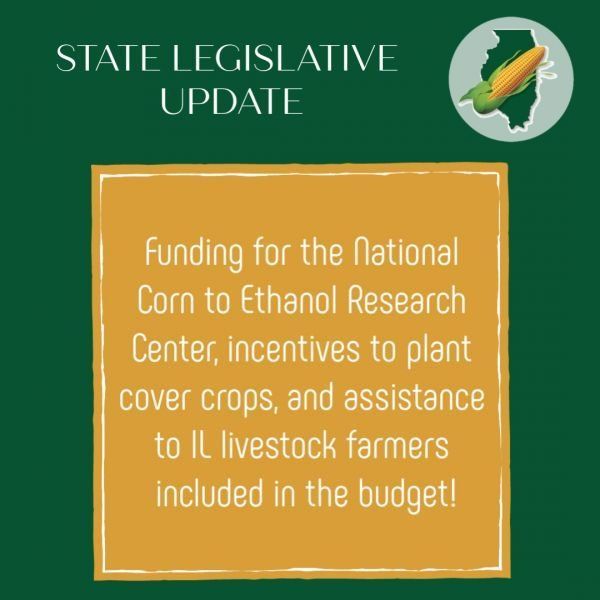NCERC, COVER CROPS, AND LIVESTOCK: IL LEGISLATIVE UPDATE

As of May 24, around 1 am, the state of Illinois now has a budget that – although reported as creatively balanced – provides some wins for Illinois agriculture.
“Illinois agriculture showed great solidarity as we negotiated and lobbied for programs that could support farmers this year and next,” said Rodney Weinzierl, IL Corn Executive Director. “It continues to illustrate what all the commodity groups get done pulling in the same direction - seeing the needs for Illinois farmers and working together to meet those needs.”
Funding for the National Corn to Ethanol Research Center (NCERC) remains steady at $1 million. This funding will allow the work of innovating new uses for corn and developing technologies to produce renewable fuel more efficiently to continue.
NCERC is a not-for-profit research center located at SIU Edwardsville that conducts research and findings for industrial and institutional clients. They focus on validating technologies that make renewable fuel production more economical and sustainable.
Learn more about some other work at the NCERC in this consumer facing video about bioplastics. NCERC is featured at 55 seconds.
The Cover Crop Premium Discount Program remains fully funded at $300,000. This program incentivizes farmers to invest in the soil and in the nutrient holding capacity of their farmland by reducing insurance premiums on acres where cover crops are planted.
The program, implemented by the Illinois Department of Agriculture, offers a $5/acre insurance premium discount on the following year’s crop insurance invoice for every acre of cover crop enrolled and verified in the program. Only cover crop acres outside of state and federal program incentives are eligible.
In response to our current crisis, the new budget includes $5 million for livestock farmers impacted by COVID-19 and depopulation of their herds. These dollars are already allocated to Illinois in the federal CARES Act, but are now specifically set aside to assist Illinois livestock farmers.
The Illinois Department of Agriculture will also implement this new program, though details of a program are unreleased.
The budget waits for approval by Governor Pritzker.






